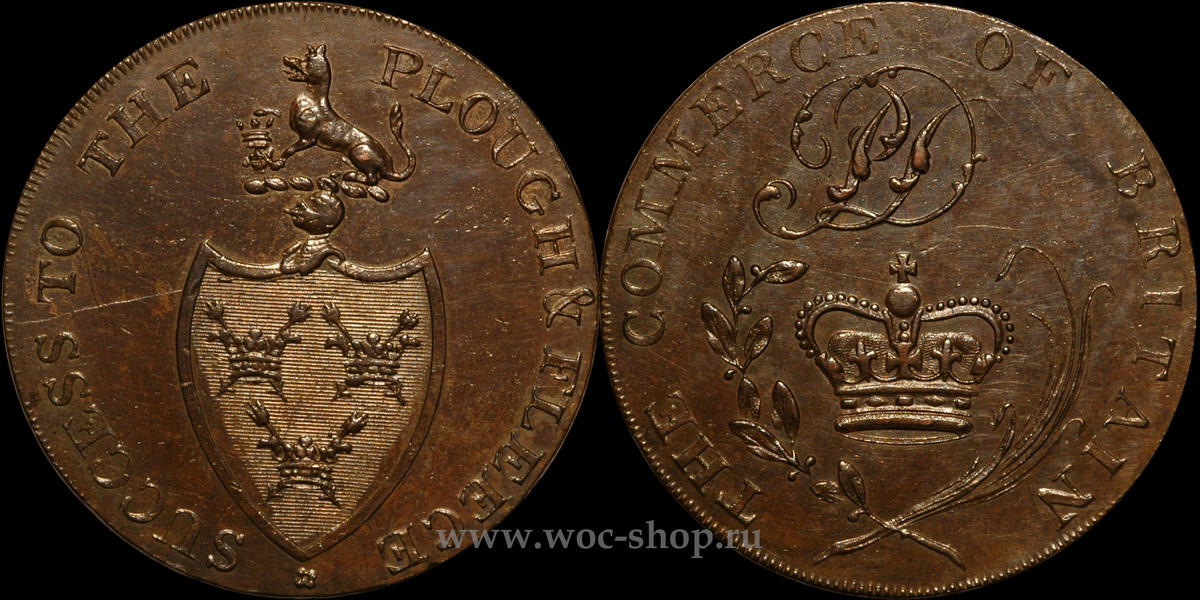

Online collections
monedastodas.com
All collections » Tokens » Bury Halfpenny

In 855, at the age of 15, Edmund became
king of East Anglia. In 869, during the invasion of England by the
Danish Vikings, for refusing to bow to pagan idols, King Edmund was tied to a
tree and shot with bows. After his death, Edmund was ranked among
the saints by the Roman Catholic Church. According to legend, the
tormentors beheaded the English king, and so that his subjects could not find
the head, they threw it into the thorn bush. The first miracle
happened right there: the head of the saint was found after they heard the howl
of a wolfhound guarding the shrine. That is why, subsequently, this
animal was placed on the images of Edmund, protecting the holy head from wolves,
and the martyr himself became the patron saint of those pursued by wolves. It
is also narrated that the head was attached to the body and buried near the
place of execution, having built a small wooden chapel. In 902,
when the remains of the saint were transferred to Bedricksworth (the place where
the four counties of East Anglia converge: Norfolk, Suffolk, Essex and
Cambridgeshire; the city was soon renamed Edmundstown, and then received the
name Bury St. Edmunds), they were found to be incorrupt and the head is fused
with the body. Another important event contributing to the
veneration of the saint is due to the fact that just 30 years after the death of
the martyr, when the terrible memories were not erased from the memory of
eyewitnesses, the Danish conquerors, led by King Guthrum, converted to
Christianity and themselves began to venerate King Edmund as a saint. Since
then, a mass pilgrimage began to his incorruptible relics. In 1214,
in the abbey church, during the struggle for the Magna Carta, the barons of
England gathered to take an oath in the fight against King John the Landless for
their rights and freedoms.
The reverse side depicts the imperial crown inside crossed laurel and palm branches, on top is a monogram of the letters P and D (Philip Deck). The circle legend reads THE COMMERCE OF BRITAIN.
Edge Lettering: Accepted at Philip Dack Post Office, Bury (PAYABLE AT P. DECKS POST OFFICE BURY -XX-).
Engraver Wyon (Wyon), manufacturer Kempson (Kempson), issued 5 cwts (1 cwts = 100 lb = 45.359237 kg).